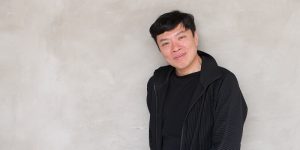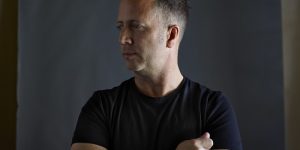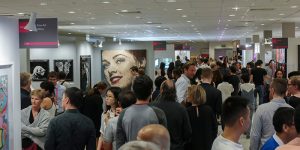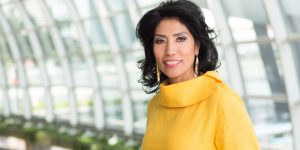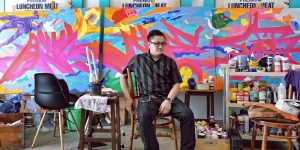Interview: Artist Robert Zhao Renhui
We sat down with Singapore’s most prolific contemporary artist to find out more about him and his work at the Sydney Biennale 2016.
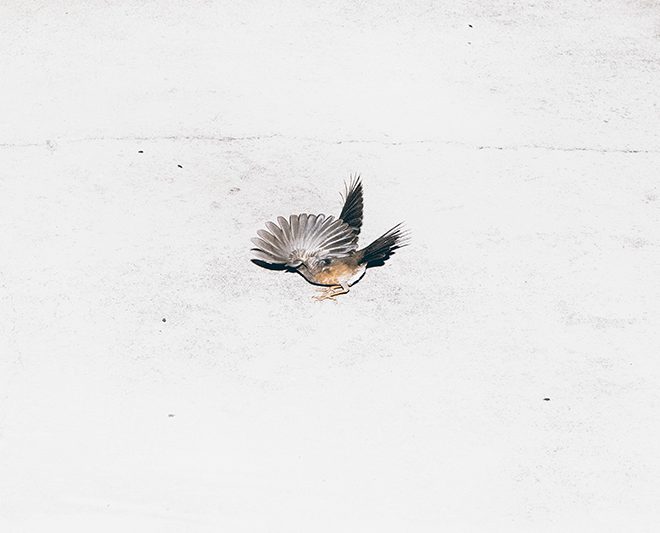
Robert Zhao Renhui needs no introduction, really. Arguably the most prolific contemporary artist in Singapore, he has amassed a broad following from the intelligentsia to the public masses (Instagram following at more than 10,000), Zhao is well known for a body of work that weaves fact and fiction together in a provocative universe, which draws viewers in and leaves them enraptured, challenging their own beliefs and man’s mediatized relationship with nature. At the core of his multi-disciplinary approach — inquisitive idiosyncratic observations of the natural world, a documentarian approach synthesized with layers upon layers of narratives — with histories, memories, anthropological views, filling in an emotional divide between what we intellectually feel about nature and how we feel about that knowledge.
He presents these investigations through the fictive Institute of Critical Zoologists, an organization (as well as his artist persona) that he set up in 2008 with the institute’s goals of “advancing unconventional, even radical, means of understanding human and animal relations”.

A portrait of Robert Zhao Renhui. Image courtesy of the artist.
Zhao received his Bachelor’s and Master’s degrees in Photography from Camberwell College of Arts and the London College of Communication, and has subsequently been awarded Deutsche Bank Award in Photography (University of the Arts London, 2011), United Overseas Bank Painting of the Year Award (Singapore, 2009), Sony World Photography Awards (2010 and 2011) and honorable mentions in Photo Levallois (France, 2008). In 2010, he was awarded the Young Artist Award by the National Arts Council (Singapore). His work has also been featured prominently in Artforum International, ArtInfo, Fotografia, Punctum, and of course, Art Republik (notably, issue five’s cover artist). He was nominated for Best Emerging Artist at the 2016 edition of the Prudential Eye Awards earlier this year.
Art Republik catches up with Zhao in the midst of a super busy first quarter of the year, as he applies the finishing touches to his work for OH! Open House Potong Pasir, and also ‘Christmas Island, Naturally’ to be shown at the Sydney Biennale — to speak about perceptions, memories, former territories and robber crabs.

Image from the series Christmas Island, Naturally.
First things first: how are you? You are between rushing and finalizing work for the Sydney Biennale and OH! Open House – Potong Pasir.
I am finishing up some final touches of the Sydney Biennale project so I am glad. I was doing press check two days ago and I hope the book arrives in time for the Biennale (it did). I needed a longer time to sit on the material I gathered on my visits to Christmas Island. Today I just installed my work at Potong Pasir with the help of Song Nian, who is also taking part in OH! Open House. I am relieved that he was around when I was installing today. I needed an added opinion on some decisions. We are working on the old photographs of one of the residents, Uncle Lee. All the photographs he ever had is contained in a single bag.
Could you describe the work that you are showing at Sydney Biennale 2016?
My work, ‘Christmas Island, Naturally’ is in the ‘Embassy of Disappearances’ at Carriageworks. It is an installation and a book talking about the extinctions of animals and conservation projects happening on Christmas Island. Since we occupied the island, there has been significant changes on the ecology of the island. As part of a program to control invasive species on the island, they are trying to wipe out all the feral cats on the island. I spent a long time looking for cats. They have escaped deeper into the forests since the culling began. Dogs are extinct on the island.

Image from the series Christmas Island, Naturally.
With Christmas Island, what specifically sparked the idea of that place for you? What were some of the key questions that kept coming up, that interested you?
I wanted to visit the island because it formerly belonged to Singapore. Isolated islands usually have very unique ecologies. For Christmas Island, crabs run the show throughout. When I arrived, I realised the conservationists are working on really exciting projects to save the animals on the island. There was a lot of killing and dying on the island which I felt was something I could talk about in the Sydney Biennale. The question of what is natural and what is man-made keeps popping up. The conservationists are doing a lot to try to help local endemic species to survive. Most of the projects involve killing and trapping invasive species. There was also a lot of extinctions on the island. Native species cannot cope with the arrival of invasive aliens. They die from predation and competition. I think if we ever get to fix the problems we caused on Christmas Island, it seems like a good idea humans should leave the island.
The fact that Christmas Island formerly belonged to Singapore (with similar ethnic and cultural make-up); did that play a part in your intrigue with the place; and perhaps separately, what do you feel as a Singaporean back there now?
The aesthetic is definitely something close to home. Even the food is very familiar, I had prawn noodles for breakfast! It is indeed a strange feeling to walk in a space that was once Singapore. Even some of the species of animals are strangely familiar but has morphed into something else due to the island’s remote location. For me, Christmas Island is a little like the fauna on the island. It is Singapore that was isolated and allowed to evolve in isolation. There are parts which are familiar and also new surprises that happened during the isolation. That is pretty unbelievable.
Tell us about your interest in the crab migrations on Christmas Island. Was the human intervention aspect (a bridge built to help facilitate safe passage of migration for the crabs) something that piqued your interest?
They had to close all the roads on the islands to prevent cars from killing the crabs during crab migration season. Millions of crabs are making their way to the sea to spawn. In the last few years, they closed the roads to allow the crabs to move, so moving around the island becomes extremely difficult. The bridge was another idea to help keep the crabs off the road. It was interesting. When I was there, the people told me the crabs had to be taught to use the bridges.
As Christmas Island is not a sprawling metropolis — rather the opposite of one — is there a happy interdependence between the people and the wildlife that live there?
I heard that people are beginning to appreciate the wildlife on the island recently. There are less and less robber crabs (huge crabs that can crack open coconuts) being killed on the roads. Also the locals do not mind the roads being closed for a few months when the crabs migrate. I guess some people were protective of the cats initially when the officials started to cull them as part of a conservation project.
You seem to have a knack for finding ‘ghost in the wire’ type of stories; ability to bring to life tangents of forgotten or unseen histories and images that are part of the public memory/consciousness. How do you find these stories, and determine if it’s interesting or something you’d want to explore further?
I wouldn’t say my stories are that exciting! My stories are really the stories of how we interact with nature. Nature is very evident in our everyday lives but nature can also be very invisible. The stories I tell are based on my observations. I also tend to think in images. If I can see the story in images, I will usually try to talk about it.

Image from the series Christmas Island, Naturally.
How do you think the Internet has changed the way artists — or at least for yourself — work with archival images and footage?
I think the ability to search in different contexts can be useful or inhibiting sometimes. True discovery of the unknown almost never happens on the Internet. The possibility to create an archive from eBay then becomes interesting for me. I thought it would be interesting to work with archival images from the National Archives but in fact these archives can be intimidating. The images are very powerful yet very nostalgic. They are also trapped in the confines of the context that are already given to them in their boxes and labels. Have you tried browsing the online archives that they put up? I find it so hard to be inspired by browsing them online. How do I talk about the archive with a historical continuity and not be overwhelmed by nostalgia? Most of the time the information pegged to a photograph can make the photograph ‘die’.
How do you feel about your work with regards to other documentarians/archivists and photographers, at this moment? Your ethos and work are hard to specifically locate in any single given genre — they’re not conventional documentaries — and seem more geared towards a perceptive viewership that is accustomed to navigating multiple fields of information and experience.
I think I am a ‘documenter’ too but a very subjective one. Some of the events on Christmas Island are so intense that I have to think of ways to talk about them without being too overwhelming. I am trying my best to document nature. I also try not to exploit my subjects. Humans do not appear in my work, unless they are scientists. I have steered clear of using archival images directly in my work because as a medium, they can be so hard to control. I find it hard for these images to work for me in the world that I’ve constructed. What I aim to do is to have a conversation with people about what their ideals and idea of nature is. I am also interested in many things to do with photography and information. We should always question everything that is given to us.
What’s next for you?
100 years of The Natural History of Singapore.
Story Credits
Text by Tan Boon Hau
This story was first published in Art Republik.




